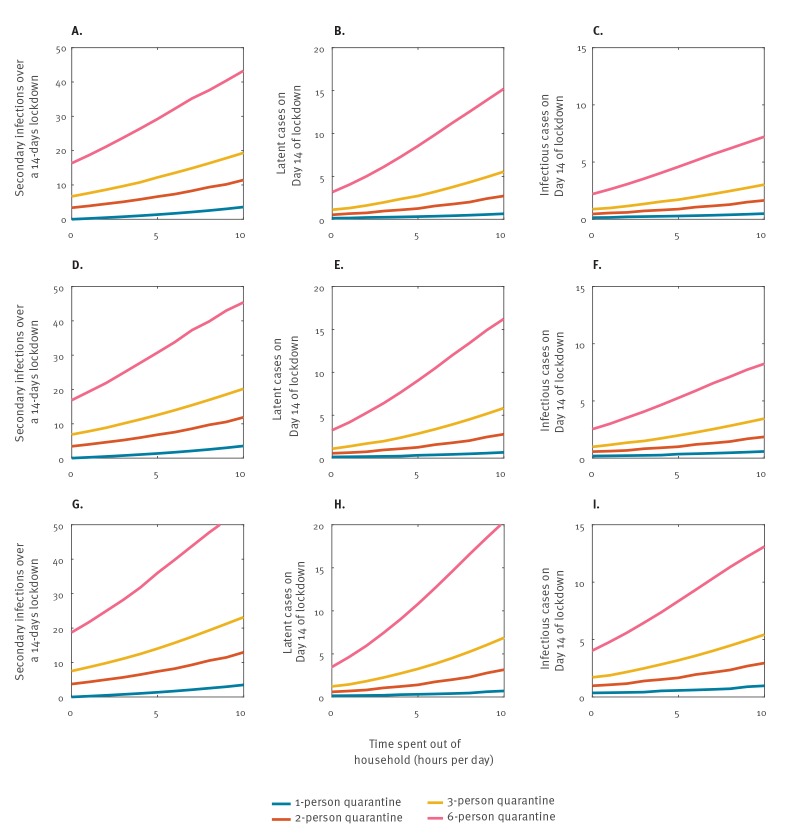Figure 1.
Estimation of the number of total secondary cases (panels A, D, G) during the 14-days period and the (panels B, E, H) latent and (panels C, F, I) infectious cases of COVID-19 at the end of a 14-days lockdown of a city with a population of 5,000 persons, depending on the degree of community quarantine adherencea, the size of quarantine units and the proportion of asymptomatic cases
COVID-19: coronavirus disease.
a Low adherence means that a large amount of time (up to 10 hours) is spent out of the household per day and per person.
Generally, higher adherence and smaller quarantine units help to minimise the number of (Panel A) secondary cases over the 14 days period, as well as (Panel B) latent and (Panel C) infectious cases at the end of a lockdown. This was shown for 10% asymptomatic cases. The same conclusion follows when also considering (Panels D–F) 20% asymptomatic cases and (Panels G–I) 50% asymptomatic cases. The number of cases, however, increases with the proportion of asymptomatic cases.

